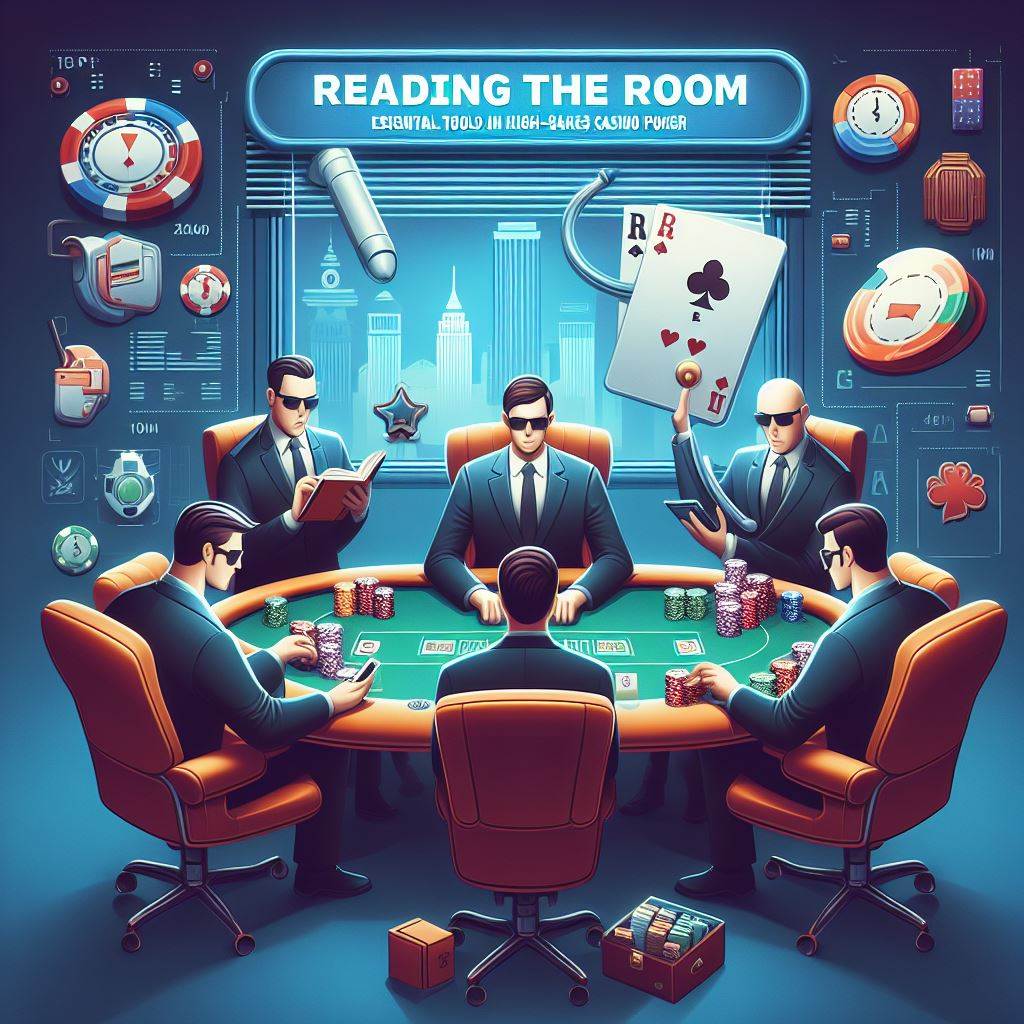
In the electrifying atmosphere of high-stakes casino poker, mastering the art of reading the room transcends mere strategy—it becomes an indispensable skill that separates the proficient from the professionals. The ability to decipher tells, or subtle physical and behavioral cues from opponents, can provide invaluable insights into their potential hand strength, intentions, and overall mindset. This article delves into the nuanced world of poker tells, offering strategies to enhance your observational skills and elevate your game in the high-pressure environment of casino poker.
The Foundation of Tells
Poker tells can be broadly categorized into two types: physical tells, which are visible changes in a player’s appearance or actions, and pattern tells, which are deviations from a player’s usual betting patterns or gameplay behavior. The key to leveraging these tells effectively lies in establishing a baseline behavior for each opponent, which can then be used as a reference point for detecting anomalies that signify potential bluffs, confidence, or uncertainty.
Physical Tells: The Body Doesn’t Lie
Physical tells are often involuntary and can range from subtle to blatantly obvious. Common physical tells include:
Facial Expressions: Quick changes in facial expression, such as a smile or a frown, can indicate a player’s initial reaction to their hand or the community cards.
Hand and Arm Movements: Shaky hands when placing bets or covering one’s mouth can reveal nervousness or excitement.
Eye Movements: Avoiding eye contact or excessively staring at chips or cards may indicate bluffing or strength, respectively.
Posture: Sudden changes in posture, leaning in or reclining, can signify confidence or a lack of it.
Pattern Tells: Decoding Gameplay Behavior
Pattern tells require a keen sense of observation and a good memory for how a player has acted in past hands. They include:
Betting Speed: Quick bets might indicate a strong hand or a bluff, while hesitation could suggest a player is calculating odds or unsure of their hand.
Betting Size: An uncharacteristic increase or decrease in bet size can signal strength or weakness.
Playing Style Shifts: A sudden change from passive to aggressive play, or vice versa, often signifies a significant change in hand strength.
Psychological Tells: The Mind’s Mirror
Beyond physical and pattern tells, psychological tells involve understanding a player’s emotional state and how it affects their decision-making. This can be gleaned from conversations, reactions to the play of others, and overall demeanor at the table. Emotional control, or the lack thereof, can be a significant indicator of a player’s confidence in their hand.
The Art of Misdirection
It’s crucial to remember that experienced players may use false tells to deceive their opponents intentionally. This level of mind game adds a layer of complexity to reading the room, requiring players to distinguish between genuine and manufactured tells. Developing this discernment is key to navigating the deceptive waters of high-stakes poker.
Enhancing Your Observational Skills
To improve your tell-reading abilities, focus on observing one player at a time, starting with the most expressive. Note their baseline behaviors and watch for deviations. Practice these observational skills outside the poker room to sharpen your ability to notice subtle changes in body language and behavior.
Ethical Considerations
While reading tells is a legitimate part of poker strategy, maintaining respect and sportsmanship is paramount. Observing opponents should never cross into invasive or disrespectful territory.
Conclusion
Reading the room in high-stakes casino poker is an art form that combines keen observation, psychological insight, and strategic acumen. By developing the ability to read physical and pattern tells, while navigating the complex interplay of deception and misdirection, players can gain a significant edge at the table. Remember, in the high-stakes game of poker, information is power, and the ability to read your opponents can turn the tide in your favor, one hand at a time.





